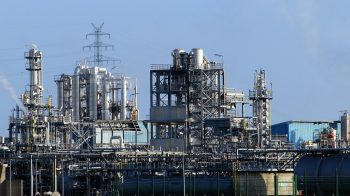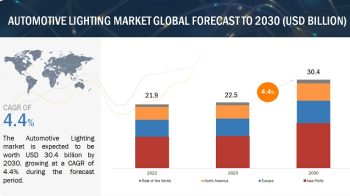Aspartics react with aliphatic polyisocyanates to form polyaspartics. Polyaspartic coatings are used in bridges, flooring, OEM coatings, automotive repair, wind turbines, and pipelines in the oil & gas industry, among others. Increased productivity and cost efficiency, quick & safe installation of the product, customizable options, and better properties than epoxy- and polyurethane-based coating technology act as a major driver of the market. MarketsandMarkets projects that the global polyaspartic coatings market will grow from USD 358 million in 2018 to USD 521 million by 2023, at a CAGR of 7.8% during the forecast period.
Download PDF Sample Report at https://www.marketsandmarkets.com/pdfdownloadNew.asp?id=164349114
Due to the superior properties of polyaspartic coatings, they have the potential to replace epoxy- and polyurethane-based coating technology. Polyaspartic coatings have three times more abrasion resistance, are more flexible and UV stable than epoxies, and are not sensitive to moisture like polyurethanes and hence have an advantage in high film build properties. These coatings are used in various the building & construction, transportation, power generation, and industrial sectors.
Pure polyurea is projected to be the fastest-growing type segment. It is a subset of aliphatic polyurea. The main advantages of pure polyurea over hybrid polyurea are its rapid reactivity, better chemical & mechanical resistance, high resistance to tearing, better abrasion & impact resistance, resistance to water and that is made of 100% solids (no solvents present). Pure polyurea is used where higher elongation, tensile strength, and abrasion resistance are required. Pure polyurea is used as an anti-corrosive in sewage, effluent treatment, bed liners in automotive, and on tough flooring. It has a life span of 15-20 years.
Building & construction is the projected to be the fastest-growing end-use industry of polyaspartic coatings. The application areas include bridge construction, commercial architecture, floor & roof coating, caulks, joint fill, parking decks, concrete repair, and structural bonds. Polyaspartic coatings are used as topcoats, in stone carpets, sealants, and waterproofing. It is estimated that by 2030, the volume of global construction output will grow by 85%, with the US, China, and India leading the market and accounting for 57% of global growth. Therefore, the growth of the construction industry will drive the polyaspartic coatings market.
APAC is projected to be the fastest-growing polyaspartic coatings market. There is an increase in the consumption of polyaspartic coatings in the building & construction, transportation, industrial, and power generation sectors in APAC due to industrialization and growth in the building & construction sector of the region. Growing innovation and development and rising demand for improved products are driving the use of polyaspartic coatings. APAC is a price-competitive market and conventional coatings that are available are much cheaper and easily available in the region. Polyaspartic coating manufacturers have a presence majorly in Europe and North America. Therefore, increasing their presence in the region and creating awareness about polyaspartic coatings could create a significant opportunity for players in these regions.
Currently, epoxy- and polyurethane-based coating technology are used for flooring and other corrosion resistance applications. End users in Europe and North America have already started replacing these with polyaspartic coating technology. However, the growth of end-use industries in growing economies in APAC and the Middle East & Africa is much higher than in Europe and North America. Hence, manufacturers have an opportunity to establish their presence and create awareness of polyaspartic coatings.
Currently, epoxy- and polyurethane-based coating technology are used for flooring and other corrosion resistance applications. End users in Europe and North America have already started replacing these with polyaspartic coating technology. However, the growth of end-use industries in growing economies in APAC and the Middle East & Africa is much higher than in Europe and North America. Hence, manufacturers have an opportunity to establish their presence and create awareness of polyaspartic coatings.
Read More Context at https://www.marketsandmarkets.com/ResearchInsight/polyaspartic-coating-market.asp


